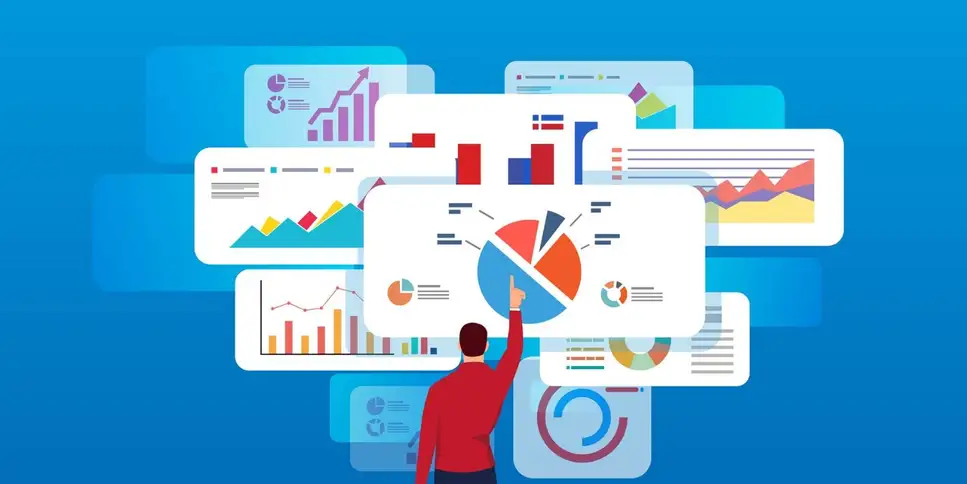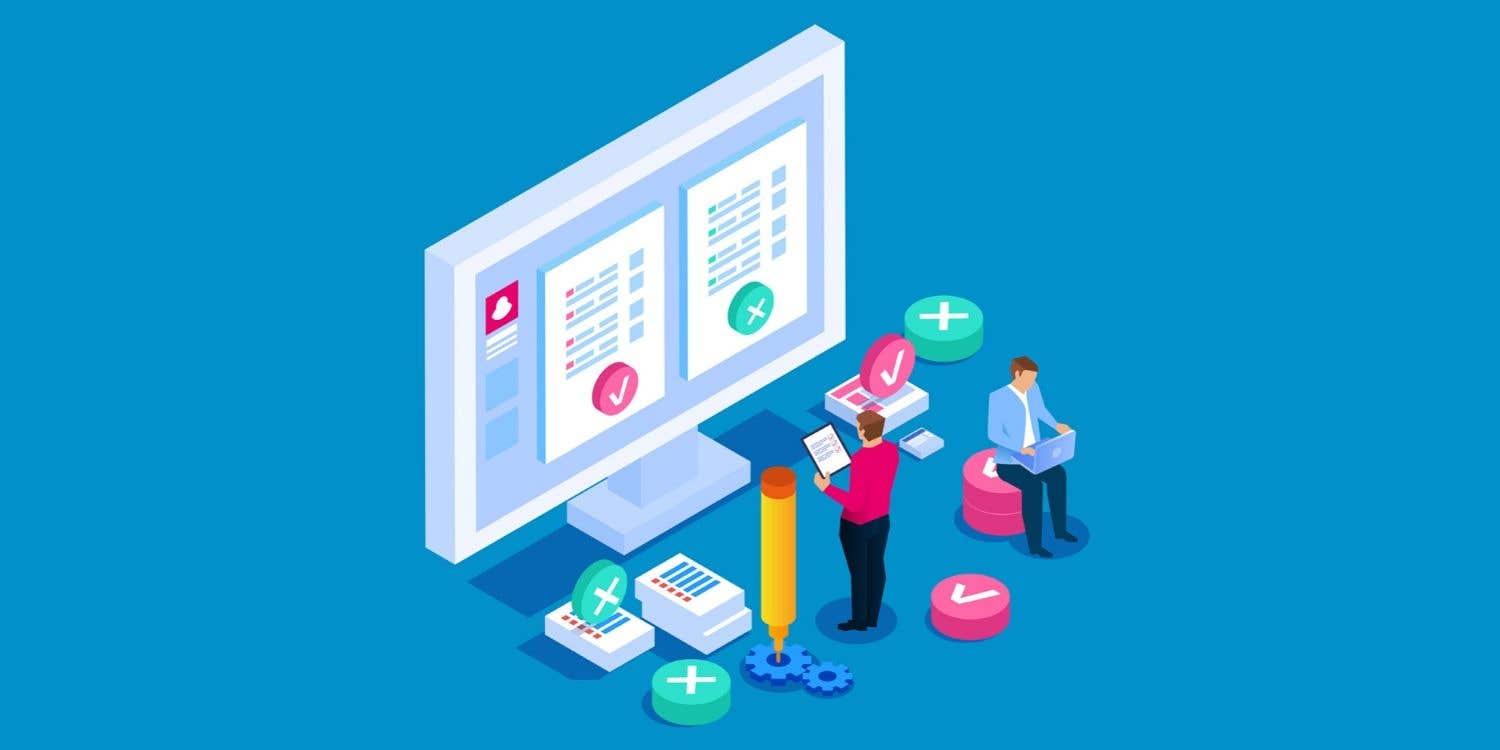Chatea con Ava - Tu consultor de negocios IA
¡Hola, soy Ava, tu guía de IA para potenciar tu negocio!
Ya sea que dirijas una empresa o sueñes con iniciar una, estoy aquí para hacer realidad tu visión gracias a los freelancers que usan IA. Comparte los objetivos de tu negocio y juntos crearemos un proyecto en los que nuestros talentosos freelancers puedan ofertar. ¡Hagamos realidad tu visión!
Tengo un negocio
Estoy comenzando un negocio
Algo salió mal al enviar la conversación a tu correo electrónico. Por favor, intenta de nuevo más tarde.
Solo puedes guardar tu conversación una vez por hora. Por favor, intenta de nuevo más tarde.
Tu conversación es demasiado corta. Sigue chateando con Ava para poder guardar.
How to write a spec for your website project
A specifications document, or spec, helps you determine who to get to build your website, how to build it and how much it will cost.
24 feb 2020 • Lectura de 9 minutos
Actualizado el 15 mar 2020 por David M.

PhD Level Research, Market Research, Data Science.
Falló el copiado al portapapeles. Intenta de nuevo después de ajustar tus permisos.
Copiado al portapapeles.

A specifications document helps you communicate what you need your website to do
One of the most pivotal steps in the creation of a website project is writing down the website specifications and requirements. Writing down the specifications helps you communicate the most essential aspects of the project such as the planning process, as well as the necessary data required to establish the website’s foundation. Writing down the specs for a website paints a picture of the steps that need to be taken to build it and what the final product should look like.
Overview
One of the key elements to consider when writing the specs for your business is giving an overview of your website. This entails providing relevant details regarding your company/website such as a brief history of your company, the types of products and services your company offers and the problems and solutions the website is trying to address. Writing an overview of the website gives an insight into your website’s purpose and helps create a website that reflects your core functionalities and values.
Your overview should discuss what type of website you need built. This is going to dictate how it's built, the skills you need to hire, the platform you use and the budget for your project. Your spec should make clear whether your website is:
Or any other type of site. Getting this bit down on paper is the most important part of your spec. It determines every choice that follows. For example, if you're launching a blog, you might be able to use a platform that doesn't require a lot of coding. However, if you're building a web application or a marketplace, you might need some more sophisticated features.
Goals and objectives
It helps to write down your goals and expectations for the project. Identifying the website’s objectives lets everyone involved in the project know what you're trying to achieve, and makes it possible to come up with ideas and solutions.
Writing your goals and objectives for the project also highlights the motivating factors behind creating your website. Is the website meant to sell a product or service? Is it an affiliate site that'll rely on generating high traffic? Is it an application that's meant to solve some problem for the user? If your objective is to share your thoughts and opinions on a blog, the process of building your site is going to be very different than if your objective is generating revenue by taking payments for products or services.
It's important to ensure that the goals you set are specific, measurable, attainable, relevant and time-bound (SMART). Identifying your expectations for the website shapes its creation.
To outline your website goals most effectively, you need to first identify all of your high level objectives and then all of the aesthetic and technical required to meet these objectives.
Below are some examples of high level objectives.
Increase sales
That's an obvious objective right? It actually isn't that simple, each business has unique sales requirements, depending on what they're selling.
If you're not sure how to categorize your offering, here are some examples of popular online sales solutions.
Will you be selling a variety of physical / digital products? Some examples are:
Dropshipping
Software
Online courses
Will you be selling a service?
Some examples are:
Consultations
Coaching
Digital agency
Engineering services
Will you be selling a single product? Some examples are:
An ebook
Single product promotion
If your sales offering falls into any of the above categories, increase sales would be the best objective for your website.
Increase exposure and brand awareness
Perhaps your primary objective isn't sales, but to increase exposure. Some examples of websites in this category include:
Blogging websites
Business websites that offer more information about their services
Entertainment websites (such as the onion)
Media websites (news and reporting)
Build up a lead list
Rather than pressuring visitors to instantly make a purchase you might decide to put them through a nurturing journey to dispel any of their reservations. This is especially ideal for highly complex offerings that require their leads to meet a specific set of qualifications.
A business with a lead building objective may only need a landing page website. The downside to a landing page website is that it can only be used for a single sales campaign and you need to purchase a domain and hosting package for every different landing page you create.
The most cost effective option is to create lead capture landing pages as separate pages to your primary website. That will allow you to create as many landing pages as you like without paying extra for seperate domains or hosting.
When choosing the primary objective of your website, you are not limited to just one of the above options. Your goal could be to build a lead list and increase sales, or possibly even all three.
The purpose of identifying your primary objectives is to make the next step easier for you. We will now be stepping down to a more granular level to determine the aesthetic and technical specifications of your primary objectives.
Technical and aesthetic requirements for all websites
The following is a list of technical requirements that could benefit all website categories. They are outlined below:
CRM
A CRM is a database of all of the contact information submitted on your website. A CRM integrated into your website will save you from the arduous tasks of manually inputting all of the details of your contacts and leads into your CRM.
There are off the shelf solutions you can use, but if you would like more control of your data and CRM functions, a custom CRM solution is a better option.
The other major benefit of having an integrated CRM is that it can help you execute high efficient sales campaigns.
You can send separate sales campaigns to specific audience segments based on their historical behavior. This will allow you to tailor your sales efforts around the unique triggers each audience segment is most likely to respond to, thereby increasing the likelihood of conversions.
Email marketing software
Even if building up a leads list is not your primary objective, you should still establish a means of building a subscriber list.
If visitors perceive you as an authority in your niche, they will be open to receiving further communications from you. With a growing subscriber list you can implement a highly effective content marketing strategy and increase your revenue.
You never know how popular your website will get and you should make the most of every visitor. Whether it's via direct sales, or through indirect methods like content marketing, you can make money from anyone.
UX optimized user journey
The is an absolutely necessary aesthetic requirement for all website objectives. All of your visitors need to have a pleasant experience when navigating your website. Your primary objective needs to be very clear to them and there should be minimal steps to reaching that objective.
A UX optimised website is also one of the primary SEO metrics , so it greatly affects the Google rank of your website.
Mapping a UX optimized design is dependent on many factors such as the unique mindset and behaviors of your target audience and even the time of day they are most likely to visit your website.
To help you craft a UX optimized visitor journey that's tailored to your unique business, it's best to work alongside a UX specialist .
Target audience
Another important factor to consider when writing your website’s specifications is the target audience. This includes the existing clients, target clients, the press, as well as future prospective employees. Identifying specific traits of your target audience such as the age range, online browsing patterns, location and gender helps you create features in your website that resonate with your audience. It also helps a graphic designer understand how your site should look.
Preliminary website architecture and taxonomy
The website architecture is the way your site is structured. It's essentially your sitemap. Visitors land on your homepage, but where do they go from there? Your site architecture maps out a visitor's journey through your website. Some important factors to consider would be:
Understanding your site architecture ensures that key details of the website’s design aren't forgotten. Also, including the provisional site structure in the specifications further ensures that the mandatory sections of the website such as the information architecture are included. It also helps determine the size and complexity of the content.
As we said before, your site architecture doesn't have to list every single page you ever intend to create. It's better to think of pages in terms of categories, and then consider how visitors will navigate to those categories from the homepage.
Features and functionality
If you're building a blog, you probably don't need much functionality. A simple, static website will do. But if you're building a web application or an ecommerce store, you're going to need dynamic features. Some of the features a site might include would be:
Identify the features and traits you want for the website based on factors such as the website’s purpose and its target audience. List the features you want to incorporate in the website, include additional details and an explanation of how each feature is expected to function within the website. List examples from other websites for reference or comparison, and how these features can be integrated (if need be) with third parties. For example, if you need to take payments on your website, you're probably not going to build a payment gateway from scratch. You're much more likely to integrate an existing one with your site.
The functionality you want for your site will also dictate the tech stack you use. This essentially means the programming language for the front end (the part the visitors see) and the back end (the data held on servers). And this will dictate the developers you hire for your project. If you're building a static site, you may just need an expert in HTML5 and CSS. If you want advanced functionality, you might need an expert in a Javascript framework like Angular.js or React.js for the front end and a PHP expert for the back end.
Non-functional requirements
It is important to outline the non-functional requirements of the website. This includes elements such as the website’s legal requirements, accessibility, location and security. For instance, you should note whether or not the website should be easily accessible regardless of people’s abilities, age or location. Also, some non-functional requirements such as loading time are central especially for the ecommerce websites. Identifying the legal requirements for your website is equally essential.
Assumptions and milestones
Make sure that your spec document addresses possible assumptions such as ongoing support and maintenance, structural and design customization options and hosting. Also, ensure that all the different milestones or phases of the website’s development are included. Such milestones can include low-fidelity wireframes, final high fidelity mockups, front end coding, back end coding, content uploading, quality assurance testing and launch.
Budget
Determining your budget helps you to identify and avoid spending money on unnecessary features or applications. Your budget may dictate some of the features and functions you're able to implement. And, it'll also dictate the makeup of the team you hire to execute your plan.
Deadlines
Adding deadlines in the requirements document ensures that the development of the website is done within the set timeframe. The deadlines should be broken up into a series of deliverables, following the milestones you set up earlier.
Get help writing your spec
It's possible that there are some of these questions you don't know the answer to. For example, you may have no idea what tech stack you want your site built on. You may not know what taxonomy you should use for your site's content. If you're feeling confused, don't worry. You can get some help to produce a spec that engineers, designers and content producers can all align around to bring your website vision to life.
A Technical Co-Pilot can help you work through your spec. During a free initial consultation, they'll be able to ask the right questions to help you communicate what your website is all about and what you want it to achieve. Then, they can get a technical spec written that communicates to anyone working on your website exactly the steps they need to follow, the technology they need to use and the deadlines for delivering their part.
Talk to one of our Technical Co-Pilots today, and get things moving on creating your website.
Cuéntanos qué trabajo necesitas encargar
Ingresa el nombre de tu proyecto
Historias relacionadas
Habla con uno de nuestros Copilotos técnicos para que te ayude con tu proyecto
Artículos recomendados solo para ti

There are a lot of details to keep in mind when you're building a website. Our guide will help you keep track of your to-do list.
1 min read

Learn the complete end-to-end process of building a successful website for your business in our comprehensive guide
19 min read

Hiring freelancers for a project can save you time and money, but it's important to understand how to get the best results
4 min read

Bring visitors to your site, turn them into leads and turn those leads into paying, loyal customers by building your sales funnel
7 min read
¡Gracias! Te hemos enviado un enlace para reclamar tu crédito gratuito.
Algo salió mal al enviar tu correo electrónico. Por favor, intenta de nuevo.
Cargando visualización previa
Permiso concedido para Geolocalización.
Tu sesión de acceso ha expirado y has sido desconectado. Por favor, inica sesión nuevamente.




